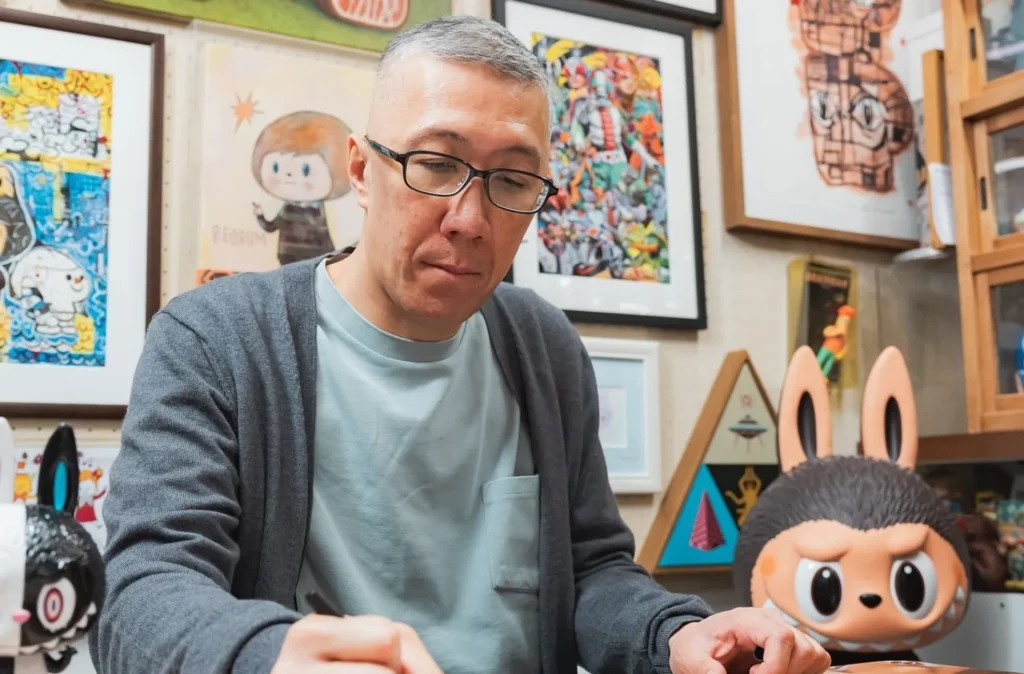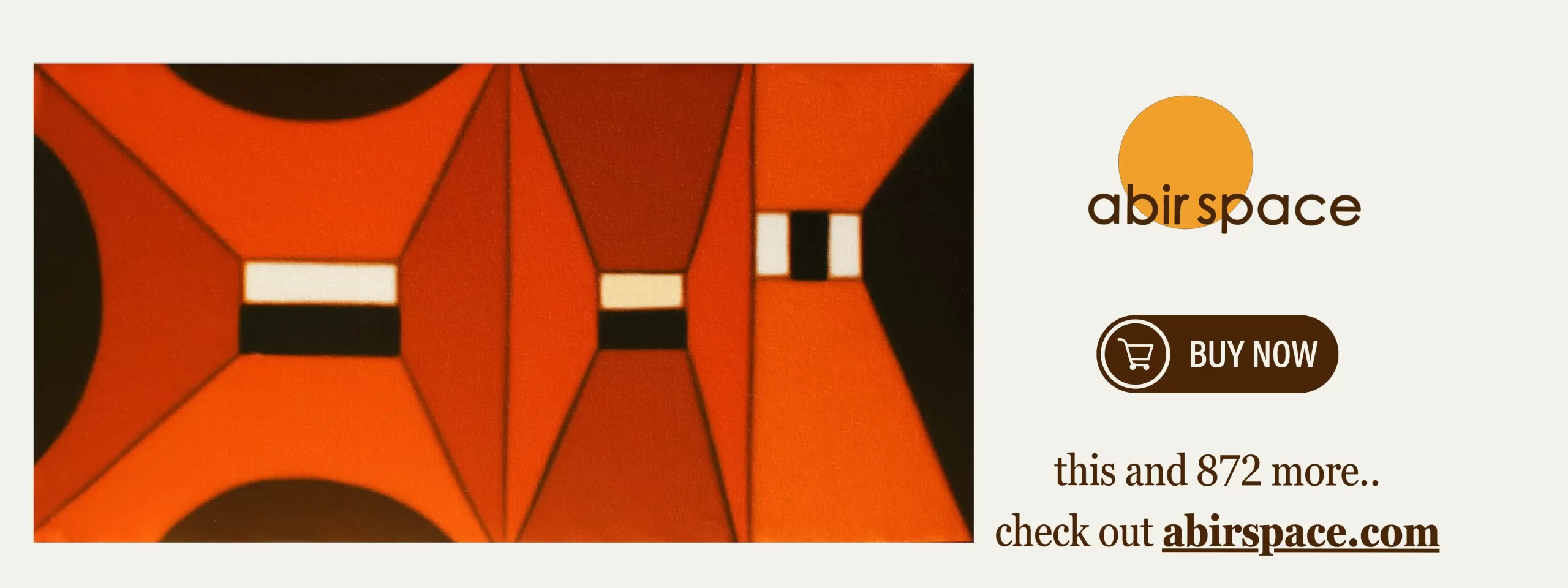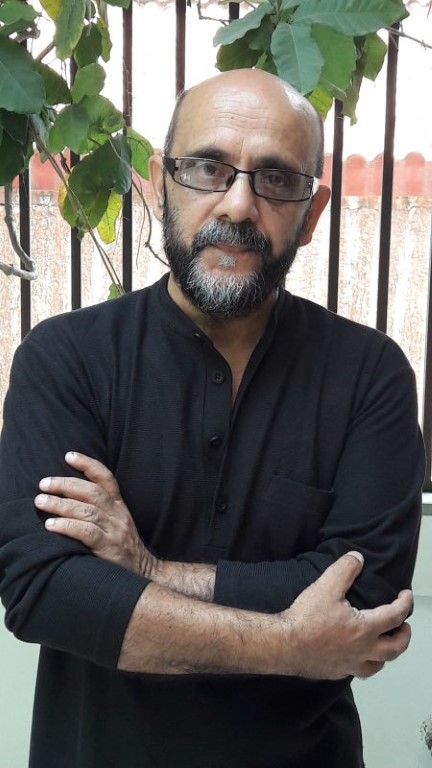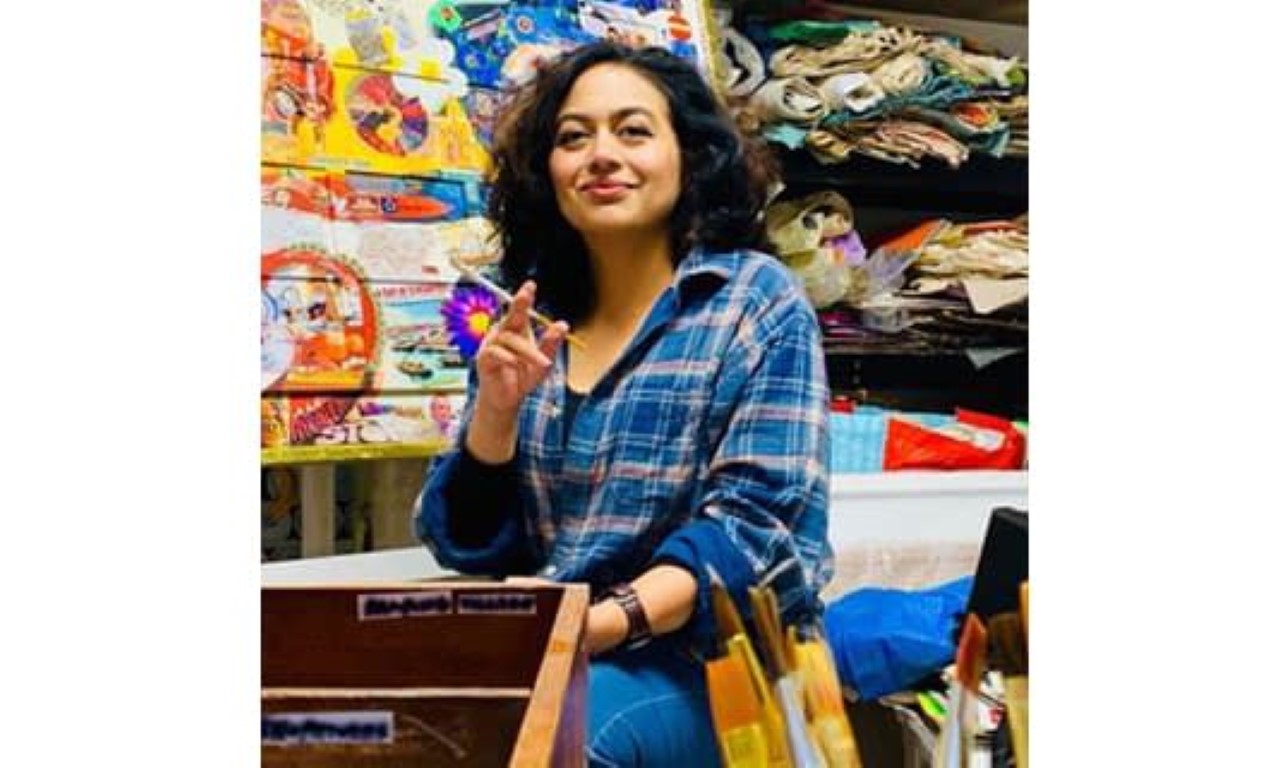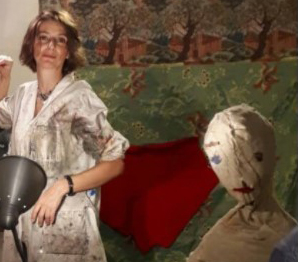In the landscape of contemporary art, few artists have successfully navigated the intersection of commercial collectibles and gallery-worthy fine art quite like Kasing Lung. The Hong Kong-born, Belgium-based artist has created a phenomenon that challenges traditional boundaries between art toys, illustration, and serious artistic practice.
A Cross-Cultural Foundation
Born in Hong Kong in 1972, Lung’s artistic trajectory was shaped by an early relocation to the Netherlands at age seven. This cultural displacement became a creative catalyst, immersing him in Nordic folklore and European fairy tale traditions that would later inform his distinctive visual language. As Lung explained to Perfect Magazine, his childhood was spent “reading storybooks and being influenced by ancient European elf legends,” developing artistic skills in an era “when there were no game consoles or computers.”
His formal artistic training in Belgium culminated in a historic achievement: becoming the first Chinese artist to receive Belgium’s prestigious Illustration Award, as reported by Prestige Online Thailand. This recognition established Lung as a serious illustrator, with early works like “My Little Planet” (2013) and collaborations with renowned Belgian author Brigitte Minne demonstrating his narrative sophistication.
The Monsters Universe: Art Meets Commerce
In 2015, Lung introduced “The Monsters” series, beginning with “The Story of Puca”—the first installment of what would become his trilogy. Central to this universe is Labubu, a character that embodies the artist’s unique fusion of Eastern and Western aesthetic traditions. Drawing inspiration from Celtic folklore, Lung created a being described as bringing both luck and mischief, reflecting the duality inherent in much contemporary art.
The artistic merit of Lung’s work extends beyond character design to world-building. His creation of nine distinct characters—including Zimomo, Tycoco, Spooky, and Pato—demonstrates a comprehensive artistic vision that rivals established franchises. Each character possesses distinct personality traits and visual characteristics, forming what The Art Gorgeous describes as “an emotionally charged visual universe that blurs the lines between art toys, collectible culture and psychological storytelling.”
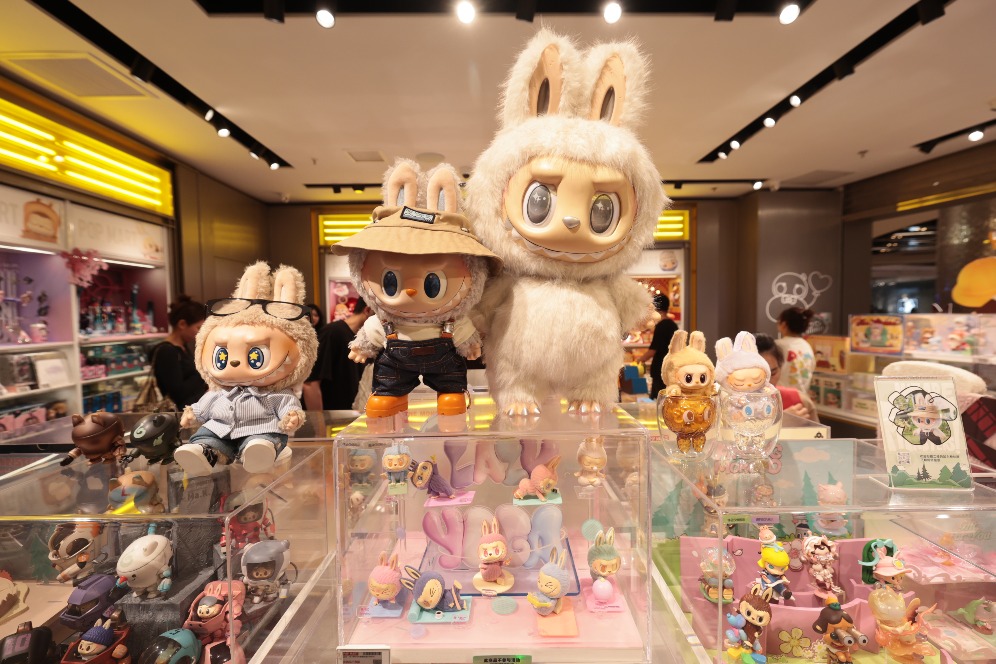
Gallery Recognition and Market Validation
Lung’s transition from commercial illustration to fine art gained momentum through his relationship with Takashi Murakami’s KaiKai KiKi Gallery. His first solo exhibition in Tokyo in 2020 marked a pivotal moment, establishing him within serious contemporary art circles. Subsequent exhibitions, including his 2024 Hong Kong showcase “Everybody Knows” at The Landmark Atrium, have demonstrated his ability to tackle complex themes like climate change and technological dependence through his distinctive visual language.
The auction market has responded enthusiastically to Lung’s work. His painting “Excited Plastic” (2021) achieved US$100,400 at Christie’s Hong Kong, while his illustration “Mon” commanded HK$330,200 at auction in March 2024, according to Bangkok Post—figures that position him among collectible contemporary artists with serious market presence.
Redefining Contemporary Practice
What distinguishes Lung’s work within contemporary art discourse is his successful navigation of multiple artistic economies simultaneously. His partnership with Pop Mart, which began in 2019, has generated over 300 variations of Labubu while maintaining artistic integrity. This collaboration challenges conventional hierarchies between “high” and “low” art, suggesting new possibilities for artistic practice in the 21st century.
According to Our China Story, Lung’s approach transcends simple commercialization: “Labubu is not just a toy but a character with a story,” with the artist’s creative career consistently revolving around “the original intention of telling stories.” This narrative foundation provides intellectual weight to what might otherwise be dismissed as mere merchandising.
Cultural Impact and Artistic Legacy
The cultural resonance of Lung’s work extends beyond collector communities into broader artistic conversations. His characters have appeared on magazine covers, inspired fashion collaborations with designers like Alessandro Michele and Katie Hillier, and attracted celebrity collectors including Rihanna, Dua Lipa, and members of BLACKPINK. This crossover appeal reflects what Tatler Asia identifies as Lung’s ability to create “a symbol of creativity and personal expression.”
Lung’s painting practice, developed alongside his commercial work, reveals deeper artistic concerns. His canvases, characterized by “unfettered brush strokes, bold words that pay tribute to song titles and, of course, his cherished monsters,” according to Tatler Asia, represent his most personal artistic expressions. Works like “Machine” (2023) engage with contemporary anxieties about technology and human relationships, demonstrating artistic concerns that extend far beyond character creation.
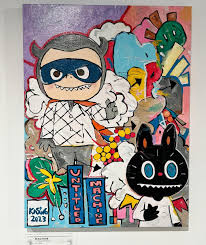
Future Trajectories
As Lung approaches the tenth anniversary of The Monsters universe, his artistic practice continues evolving. Plans for a new Labubu picture book, described by the artist as exploring themes of “time and friendship,” suggest ongoing narrative development. His recent exhibition history indicates sustained gallery interest, while auction results demonstrate growing collector confidence.
The significance of Lung’s work lies not simply in commercial success, but in his redefinition of what contemporary artistic practice can encompass. By successfully operating across illustration, toy design, and fine art simultaneously, he has created a new model for artists working in an increasingly multimedia landscape.
His advice to emerging Asian creatives, as reported by Tatler Asia, encapsulates his artistic philosophy: “Do things that others haven’t done before—try to make breakthroughs beyond established frameworks.” This approach has resulted in a body of work that challenges categorical boundaries while maintaining genuine artistic merit—a rare achievement in contemporary art’s increasingly complex ecosystem.
Contributor

